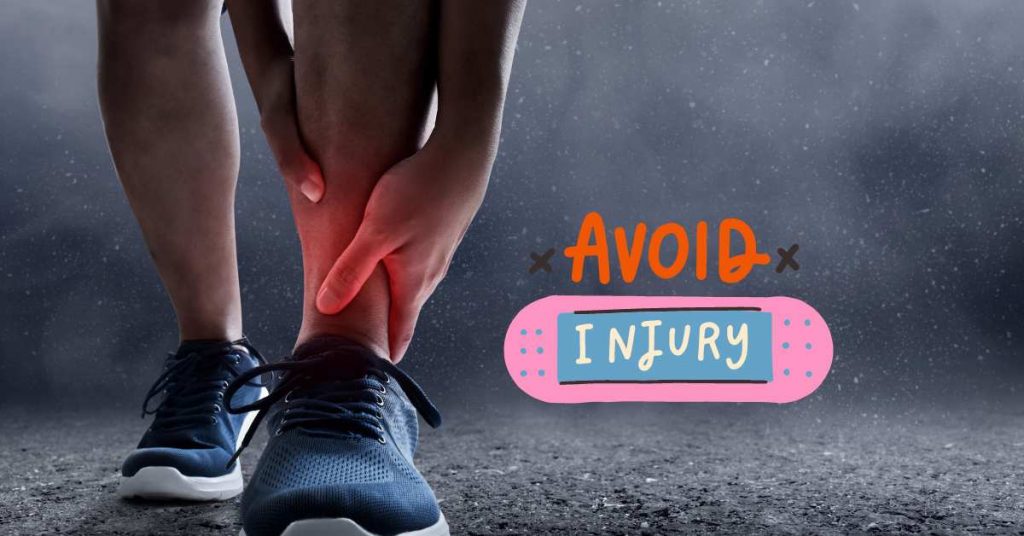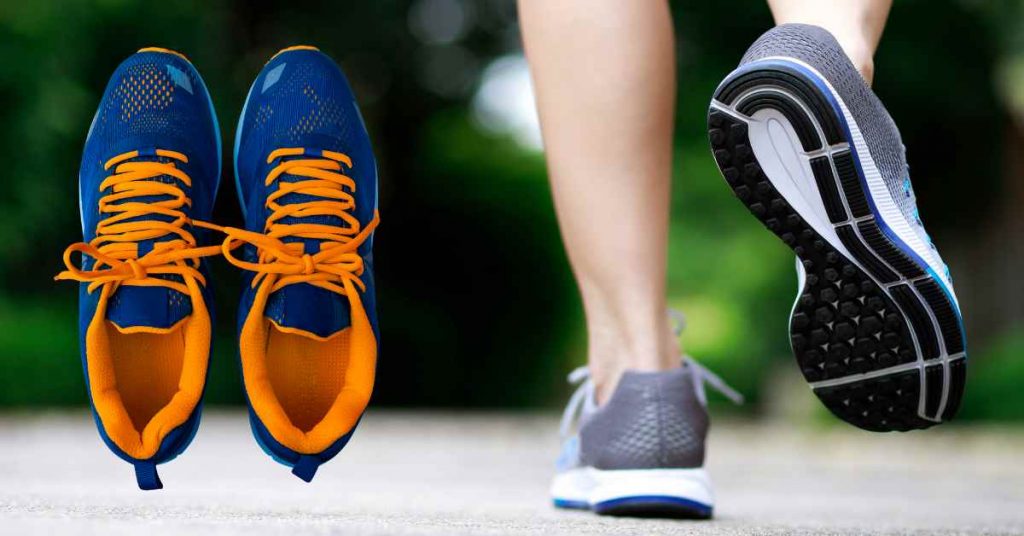How to Prevent Running Injuries: Expert Advice for a Pain-Free Journey

Running is a great form of exercise that helps maintain good physical health and boosts mental well-being. However, running injuries can derail your progress and hinder your fitness goals. To keep you on track and pain-free, we've compiled a comprehensive guide with expert opinions and practical steps to prevent running injuries.
- 1. Importance of Warm-up and Cool-down
- 2. Choosing the Right Footwear
- 3. Focusing on Running Form
- 4. Incorporating Strength Training and Flexibility
- 5. Gradually Increasing Mileage
- 6. Listening to Your Body
- 7. Expert Opinions
- 8. Conclusion
- FAQs about Preventing Running Injuries
- Q1: How can I tell if I'm overtraining and increasing my risk of injury?
- Q2: How important is cross-training in preventing running injuries?
- Q3: Can running on different surfaces help prevent injuries?
- Q4: How important is hydration in preventing running injuries?
- Q5: Can compression gear help prevent running injuries?
- Q6: Should I stretch before my runs to prevent injuries?
- Q7: What should I do if I suspect I have a running injury?
1. Importance of Warm-up and Cool-down
Warming up before your run and cooling down after are crucial steps in injury prevention. These activities help prepare your muscles, joints, and cardiovascular system for the physical demands of running and promote recovery afterward.
Warm-up:
Begin with 5-10 minutes of light aerobic exercise, such as brisk walking or jumping jacks, followed by dynamic stretches targeting your calves, hamstrings, quadriceps, hips, and glutes. These movements increase blood flow to the muscles and improve their flexibility.

Cool-down:
After your run, spend 5-10 minutes walking or jogging slowly to bring your heart rate down gradually. Finish with static stretches targeting the same muscle groups, holding each stretch for 15-30 seconds.
2. Choosing the Right Footwear
Running in the appropriate shoes can significantly reduce the risk of injury.

Here are some key factors to consider when selecting your running shoes:
a. Gait Analysis:
Visit a specialized running store for a professional gait analysis to determine your foot type and running style. This information will help you choose shoes with the right support and cushioning.
b. Fit:
A proper fit is essential to avoid blisters, toenail issues, and other discomforts. Your shoes should have a snug heel, a roomy toe box, and enough space (about a thumb's width) between your longest toe and the end of the shoe.
c. Replace Regularly:
Running shoes typically last between 300-500 miles. Monitor your mileage and replace your shoes when they show signs of wear, such as uneven tread or decreased cushioning.
Read Also: How and Why Choosing the Right Footwear for Running in Important: Tips and Top Brands
3. Focusing on Running Form
Improving your running form can help prevent injuries by reducing the stress on your muscles and joints.
Keep these tips in mind:
a. Posture:
Maintain an upright posture with a slight forward lean from the ankles. Avoid slouching or leaning too far forward from the waist.
b. Footstrike:
Aim for a midfoot strike, where the ball of your foot lands first, followed by the heel. This technique reduces the impact on your joints.
c. Cadence:
Increase your step rate (cadence) to 170-190 steps per minute, which can help decrease the stress on your knees and hips.
d. Arm Swing:
Keep your arms bent at a 90-degree angle, swinging them forward and backward rather than across your body.
4. Incorporating Strength Training and Flexibility
Exercises
Strength training and flexibility exercises can help reduce the risk of injury by improving muscle balance and joint mobility. Include exercises that target your core, hips, glutes, hamstrings, and calves, as well as stretches for your hip flexors, hamstrings, and calves.
5. Gradually Increasing Mileage
Avoid increasing your weekly mileage by more than 10% to give your body time to adapt to the increased workload. This gradual approach can help prevent overuse injuries, such as stress fractures and tendonitis.
6. Listening to Your Body
Pay attention to any discomfort or pain you experience during or after your runs. If you feel pain, step back, and evaluate your training, footwear, and running Form. Consult a healthcare professional or a running coach if pain persists or worsens.
7. Expert Opinions
A. Dr. Jordan Metzl, a sports medicine physician, emphasizes the importance of a proper warm-up, stating that "a good warm-up increases blood flow, warms up the muscles, and decreases the risk of injury."
B. Jay Dicharry, a renowned biomechanist and physical therapist, highlights the significance of foot strength and flexibility. He suggests incorporating foot-strengthening exercises and barefoot activities into your routine to improve running efficiency and reduce injury risk.
C. Jeff Gaudette, a running coach and former professional runner, advises runners to focus on consistency rather than intensity. He recommends building a strong aerobic base through easy, conversational-paced runs and gradually introducing harder workouts as your fitness improves.
8. Conclusion
Preventing running injuries involves:
- A multifaceted approach that includes a proper warm-up and cool-down.
- Choosing the right footwear.
- Focusing on running form.
- Incorporating strength training and flexibility exercises.
- Gradually increasing mileage.
- Listening to your body.
By following these expert-backed steps, you can enjoy a healthier, injury-free running journey.
Remember that every runner is unique, and it's essential to tailor your training plan and injury prevention strategies to your individual needs. If you're ever in doubt, don't hesitate to seek professional advice from healthcare providers, running coaches, or experienced runners. Happy running!
FAQs about Preventing Running Injuries
Q1: How can I tell if I'm overtraining and increasing my risk of injury?
Ans: Signs of overtraining may include persistent fatigue, decreased performance, sleep disturbances, frequent illness, mood changes, and persistent muscle soreness. To avoid overtraining, follow a well-structured training plan, prioritize rest and recovery, and gradually increase your running mileage.
Q2: How important is cross-training in preventing running injuries?
Ans: Cross-training is essential in injury prevention, as it helps develop overall fitness, strength, and flexibility. Activities like swimming, cycling, yoga, or strength training can reduce the risk of overuse injuries and muscle imbalances while enhancing your running performance.
Q3: Can running on different surfaces help prevent injuries?
Ans: Yes, varying the surfaces you run on can help reduce the risk of injury. Softer surfaces like grass or trails can absorb more impact, while harder surfaces like concrete or asphalt may increase the stress on your joints. Varying surfaces expose your body to different types of stress, which can help build resilience and reduce injury risk.
Q4: How important is hydration in preventing running injuries?
Ans: Staying hydrated is crucial for overall health and can help prevent injuries. Dehydration can lead to muscle cramps, fatigue, and decreased coordination, increasing the risk of injury. Ensure to drink water throughout the day and consider consuming electrolytes during longer runs or hot weather.
Q5: Can compression gear help prevent running injuries?
Ans: Compression gear, such as socks or sleeves, may help prevent injuries by improving blood flow, reducing muscle vibration, and providing additional support to the muscles and joints. While some studies suggest benefits, others show mixed results. It is essential to choose high-quality compression gear and use it as a complementary tool and other injury prevention strategies.
Q6: Should I stretch before my runs to prevent injuries?
Ans: Instead of static stretching before your run, focus on dynamic stretching and a proper warm-up to prepare your muscles and joints for running. Static stretching can be more beneficial during your cool-down to improve flexibility and aid recovery.
Q7: What should I do if I suspect I have a running injury?
Ans: If you suspect you have a running injury, stop running, and rest the affected area. Apply ice to reduce inflammation and elevate the injured area if possible. Consult with a healthcare professional for proper diagnosis and treatment. Returning to running too soon may worsen the injury and prolong your recovery.

Recommendation